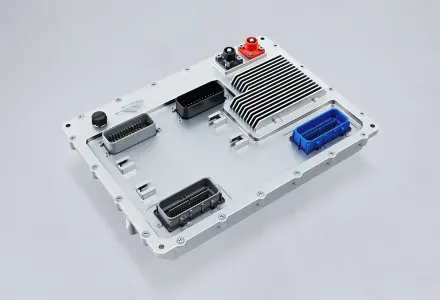Register your interest
In the Nanopower PMIC for Sensor Power Management
The Nanopower PMIC is a game-changing power management IC that brings autonomy, intelligence, and ultra-low power consumption to embedded sensor ecosystems. Demonstrated at Embedded World 2025, this standalone platform is engineered to control and configure sensor behaviour independently of the host MCU—dramatically improving energy efficiency and system responsiveness.
Unlike conventional PMICs, the Nanopower PMIC doesn’t just regulate voltage—it orchestrates behaviour. With intelligent decision-making logic and sub-microamp power draw, it can wake, power, and configure sensors based on real-world conditions or internal scheduling. Its ultra-low standby current of just 90 nA ensures that even battery-constrained applications can operate over years rather than months.
This behavioural control architecture enables designers to adapt sensing profiles dynamically. For instance, a light sensor could be configured to operate at different sampling frequencies depending on time of day or ambient brightness, reducing redundant processing and unnecessary wakeups. These changes are driven by internal configuration logic stored in built-in memory, allowing the Nanopower PMIC to evolve its behaviour without host involvement.
The latest Gen 1 release expands capability further by adding SPI support, allowing it to manage higher-bandwidth sensors such as TDK’s ToF modules. The Nanopower PMIC can now support complete sensor networks with average current draws under 15 µA—ideal for systems that rely on energy harvesting or non-standard chemistries like organic or ceramic batteries.
This evolution makes the Nanopower PMIC more than just a power delivery device—it’s a system-level optimiser. By managing wake-up timing, selective power gating, and multi-chemistry sources, it helps developers stretch the functional life of their designs while avoiding the complexity and overhead of constant host-MCU polling.
Nanopower is also simplifying the design process with a GUI-based SDK launching in April 2025. This platform lets engineers drag and drop behavioural logic blocks, sensor power schedules, and energy input parameters—no embedded firmware required. The result: faster development, optimised power management, and highly adaptable sensor platforms.
Whether you’re designing for wearables, medical devices, remote sensors, or energy-harvesting IoT, the Nanopower PMIC is a must-consider technology for engineers who want smarter control without sacrificing energy budgets.
Register your interest
In the Nanopower PMIC for Sensor Power Management
